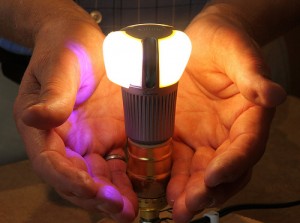Working with scientists from the Philips lighting group in Holland, University of California researchers discovered that LED bulbs that emitted less utlra-violet and blue wavelengths of light, attracted far fewer insects than those that emitted the more traditionally blue-toned light.
Read more, via TreeHugger.
LED Bulbs Could Lower Malaria Risk
LED bulbs are really having a moment. Not only are they taking the place of more energy-hogging light bulbs every where you look, but they’re also at the core of an urban farming revolution and, now, they could help prevent the spread of deadly diseases like malaria.

Leave a Reply
You must be logged in to post a comment.